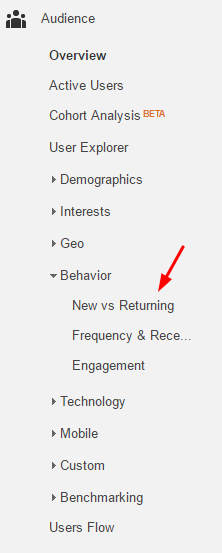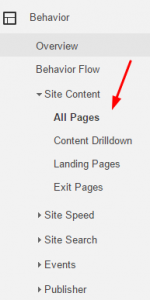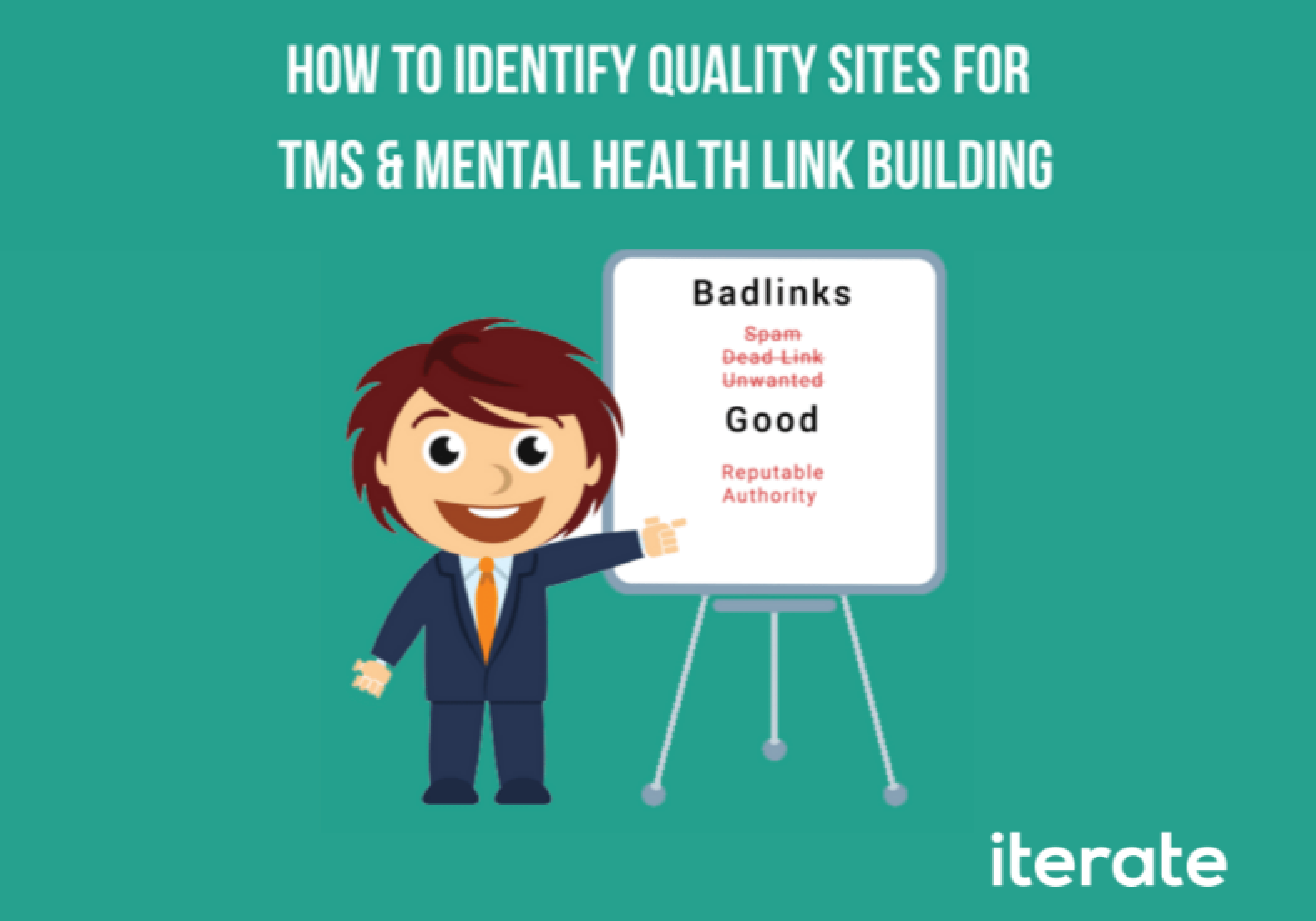We’ve all been there. You come up with a great piece of content for your brand, write your fingers down to the bone, then hustle hard to promote it in every way you can think of. It’s time to sit down and figure out if it was a success when you ask…
What does success even mean here? Is this supposed to bring in sales, boost our brand, get us in front of new readers? Is there any kind of metric I can apply to everything I write?

Content marketing is a long term project, and judging ‘success’ can be difficult.
As opposed to PPC or even SEO, Content Marketing is a long term project, and instant results might not be available, or may mislead you into making a quick decision before the data has really had a chance to tell the full story.
This post will lay out 3 steps to getting an accurate gauge of content effectiveness. By defining goals, identifying key metrics, and using the best data sources, you will build a solid foundation for judging what works (and what doesn’t) in your highly individual Content Marketing campaign.
Step 1: Define your goals
Before you can start measuring your content marketing success, you need to figure out your end goal for each campaign. Not all content is created equal, but each piece you create should work towards one or more of the following goals.
Brand Awareness
Perhaps this is a piece that establishes your brand – displaying your unique point of view or service. What you are working for is Brand Awareness, having your business recognized by potential consumers.
New Readership
Are you trying to get more people to read your content? Are you looking to ‘hook’ more potential customers into viewing more of your pieces in the future? You are working towards New Readership, people who follow your brand for more than your services – these are people who appreciate what you have to say and want to hear more.
Thought Leadership
Are you trying to establish yourself as a leading voice in your niche? Your goal is Thought Leadership, although this can tie in closely with Brand Awareness, especially if your brand is closely connected to your own personal expertise. Thought leadership is a great first step to reaching high-impact influencers, and is especially important in B2B marketing.
Soft Conversion Action
A “Soft” conversion is any action that you want that isn’t a sale or new sales lead. These can include newsletter signups, giving an email address to download an email, or simply subscribing to your RSS feed.
Hard Conversion Action
“Hard” Conversions are your ultimate goal. Is your piece of content crafted to drive a customer towards a purchase decision, or encourage them to contact your sales team? Many pieces may support these goals indirectly, but client success stories and case studies are likely geared towards a direct sale.
Step 2: Identify the best metric for your goals
Now that you know what your goals are, take some time to establish what success looks like. If you have multiple goals, be sure to track each set of metrics individually, so that each month you have a clear idea of how you are doing. For each goal, there are a few metrics that will clearly show how you are advancing:
If your goal is: Brand Awareness –
You should measure: Brand Lift and Engagement
Brand Lift is a measurement of the impact a particular piece of content has on your brand’s awareness. Typically used in advertising campaigns, this is a great metric for assessing the increase in cusomer perception that may not result in a direct sale or conversion.
Engagement is similar, but measures specific actions that you have identified as crucial to your strategy. ‘Likeing’ on social media, commenting on your blog, or sharing your content are all engagement actions that you may wish to track.
If your goal is: New Readership –
You should measure: New Visitors to content
New readership is easy to track: New Visitors to content is a metric that can easily be handled through most web analytics programs. These are users who have never visited your site before, and measuring the rate of new vs returning users can give you a good idea of the new reach you have gained by publishing your content.
If your goal is: Thought Leadership –
You should measure: Offsite Mentions, Press Coverage
Thought leadership starts with what you publish on your own site (and, to a certain extant, content that you contribute to others) but the impact will mostly be measured offsite. Seeing where you are being mentioned and what people are saying is crucial, even if this can’t be boiled down to one neat number.
If your goal is: Soft Conversion Actions –
You should measure: Raw number of conversion actions, and as a percentage of total traffic
Soft Conversions are a key part of any promotion strategy, as it gives your readers a way to interact without your brand before the ‘hard’ action of a sale. Most analytics platforms will be able to track these actions, you will want to see the raw number of soft conversions, as well as seeing how they fare as a percentage of your total traffic. This will give you the ability to judge how successful you are at ‘asking’ for these actions, and follow the path that the user took before they completed the action.
If your goal is: Hard Conversion Actions –
You should measure: # of Sales/leads from content
When you ask most business owners what metrics they care about, you’ll get a lot of vague answers. So here’s a pro-tip: It’s this one. That’s not to say that this is the only metric that actually matters, or that these others are useless, it’s just that this is the one that directly tells them how much money is coming in next month. It’s key to view your marketing as a pipeline, and hard conversions as the tap. If your tap is only dripping, it may be that you need to fix the tap… or that the whole pipe is clogged. Luckily, these will be the simplest to track in most analytics platforms, and I always suggest adding a dollar value, even if it’s just an estimate.
Step 3: Track down the best source for your chosen metrics
So, now you’ve identified your goals and the success indicators you would like to track. Now it’s time to nail down your process for viewing and reporting on these metrics.
If your goal is: Brand Awareness
You should measure: Brand Lift, Engagement
By Tracking: Social Media Shares
There are a multitude of options for tracking social media shares for a given piece of content. Maybe your blog has a few built in, or maybe you use tools like Open Site Explorer or Ahrefs.
One of our new favorites is Postreach, you can add a URL manually or connect it to your RSS feed to get updates automatically.
The goal here is to monitor each post specifically, but also shares and visits for your brand as a whole. If one piece performs particularly well and also corresponds with an increase in visits and shares to your brand pages, congrats! You’ve achieved liftoff.
By Tracking: Branded Searches
Branded Searches occur when a user searches for a brand term that is used only by you; ex: “Doritos” instead of “Cheesy corn chips.” Many small business owners discount the value of these searches, they see it as more valuable to rank for a specific service or product head term. However, if users are already associating your brand name with the product or service they want, half the battle is already won!
Large-to-medium sized brands can easily track brand searches in Google Trends, and get a chart of their brand’s growth on search engines over time. Smaller brands will need to use Google’s Search Console, identify the brand terms they’d like to track, and compile a long-term graph of search volume. If you see an unexpected spike, correlate it with content that was published or shared to identify the pieces that are achieving the most brand lift.
By Tracking: Returning Visitors In Google Analytics
Returning visitors are like gold in your marketing funnel. These are users who have enjoyed your content so much that they are coming to read more. You can see a breakdown of New Vs. Returning Users in your Google Analytics Audience Overview, as below:

Or you can see more under Audience: Behavior: New Vs. Returning.

By Tracking: Comments
Comments are a valuable metric to track, even though (of course) not every piece of content you write will elicit great comments at a similar rate. As you manage and track the valuable metrics of any piece of content you write, create an extra cell to track the number of valid (non-spam) comments that each content piece received in a given period. Soon you will have a much better idea of what types of content elicit comments, and you won’t have to worry about missing a valuable piece of insight.
If your goal is: New Readership –
You should measure: Visitors to content –
By Tracking: New/Returning Visitors
We already talked about this above, but with the value on Returning Visitors. In terms of an eventual sale Returning Visitors are a better target, but bringing in new visitors will always bethe key to expanding your marketing funnel. To track new visitors for a given piece of content, navigate in Google Analytics to Behavior: Site Content: All Pages. Select the title you want to learn more about (you may have to expand the list to find it!), and look at New vs Returning there.

By Tracking: Page Level Visitor Metrics
While you are in “All Pages” overview (see above), take some time to note the total number of visitors to your content piece. While more New Visitors should be your primary goal, the total traffic will give you a broader idea of your content’s performance. Make a note of metrics like “Entrances” (people who entered your site from this page) and Time On Page and Bounce Rate. These will all give you important data about how well your content promotion game is performing, and the types of content that engage your readers.
If your goal is: Thought Leadership –
You should measure:Offsite Mentions, Press Coverage –
By Tracking: Social Shares
Social Shares are a great way to monitor how well your content is performing in the social sphere. Lesser metrics (likes, pins, etc) are also good to track, and you can see all of these with free tools like SharedCount.
By Tracking: Republication Rate
A key part of any content strategy should be promotion – after all, buying a nice shiny sports car is great, but you won’t get very far without putting in gas! There are lots of great reasons to submit your content to other sites for republishing, though you should be aware that this may lead to some readers never actually visiting your site. For thought leadership, though, your personal brand is what you want to boost, not just visitors to your website. Following a few best practices (like including a rel=canonical tag and a link to your original post) should help you avoid duplicate content problems, and make it easier to track placements. We’ll give you a method to track all off-site links like these in the next section!
By Tracking: Off-site Mentions/Links
Go to your favorite backlink tracker (we prefer Ahrefs Site Explorer, and they’ll even give you a free trial!) and input the exact url of your content piece.

This will take you to an overview of your content performance. Select New under Referring Domains to get a day-by-day breakdown of all new links to your content, and viola! You can explore all the places your content has been shared.
If your goal is: Soft Conversion Actions –
You should measure: Raw number of conversion actions, and as a percentage of total traffic –
Using: Google Analytics Goal Tracking
The Goal Tracking in Google Analytics should be your #1 tool for tracking soft conversion items, whether they are newsletter signups, resource downloads, spending x amount of time on your site, or simply clicking through to read more about one of your products or services. While it’s certainly not good to overload yourself by tagging every single action point on your website as a separate goal, I’ve yet to find a real-world analytics account that was tracking too much! Here is a great resource for setting up goal tracking
One great plan is to track all visits to your content piece as an event in itself. This will allow you to:
- Filter these users as a custom segment
- See all visits to this page as a percentage of your total traffic
- Track user steps before and after they landed on the page, letting you know what led them there, and where they went after reading.
- Measure how many readers then went on to complete other goals, like signing up for your blog newsletter.
If your goal is: Hard Conversion Action –
You should measure: Sales/leads from content –
Using: Google Analytics Goal Tracking
And here we have the holy grail of goals – The Actual Sale. There are many caveats here, mainly that content marketing isn’t always the highest ROI form of marketing you can do in terms of dollars brought in, but it is still great to be able to show that people who read your content go on to buy your product or fill out your lead forms.
The Hard Conversion action should always be Goal 1 in your Google Analytics platform, which makes it simple to filter users who have bought or converted, and then see what else they viewed on your site. If you can, give this goal a dollar value (even if it’s just an estimation) so you can show a prediction of revenue. Of course, user paths are rarely simple, so you may have users who visited first by clicking a search ad, came back later through remarketing, liked your content on Facebook, then eventually bought your product. In this case, it would be hard to say that your content led to a sale, but that’s a question of attribution left for another day!
So, there you have it! 3 steps to measure the value of any content piece, 5 goals to explore, 7 metrics to look out for, and 11 methods that might work for you! Even a guide like this isn’t exhaustive, so below are a few more resources. If you have any questions, comments, or suggestions for improving this guide, please leave a comment!
http://writtent.com/blog/9-ways-measure-content-marketing-success/
http://blog.hubspot.com/marketing/measure-content-marketing-roi
http://blog.sumall.com/journal/7-metrics-accurately-measure-content-marketing.html
http://contentmarketinginstitute.com/2012/06/measure-success-content-marketing/






